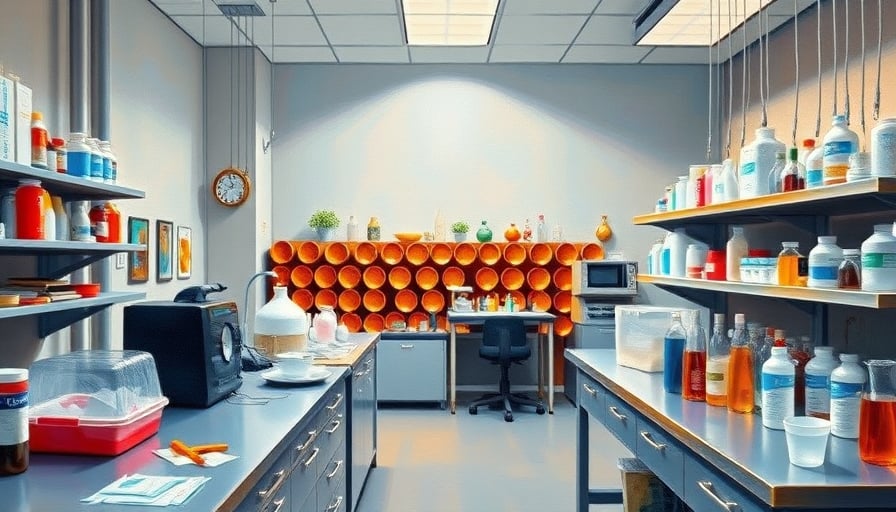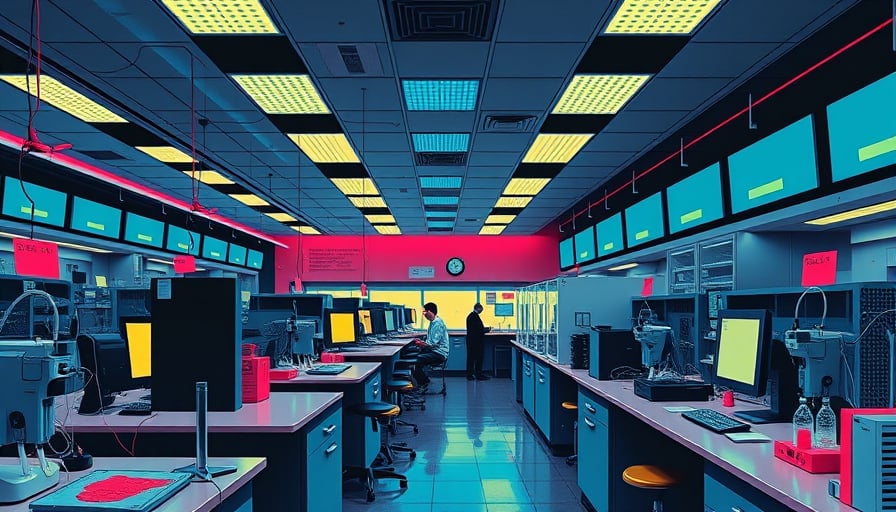HGTC Navigates a Volatile Chemical Landscape Amidst Sector‑Wide Momentum
Hunan Hengguang Technology Co., Ltd. (HGTC) is one of China’s most established players in the new‑chemical‑materials space. The company’s portfolio spans chlorinated compounds, vulcanizing agents, specialty acids, and advanced materials such as calcium‑aluminum hydrotalcite and germanium ingots. As of 16 November 2025, HGTC’s shares traded at CNY 27.71, comfortably below the 52‑week high of CNY 31.03 but well above the low of CNY 16.40. The market capitalisation sits at approximately CNY 3.05 billion, while the price‑earnings ratio remains negative at ‑307.99, reflecting the cyclical nature of the chemical industry and the company’s heavy investment in research and development.
Sector Momentum and Recent Market Dynamics
The Chinese equity market on 19 November 2025 opened slightly lower across the A‑share indices, but the day quickly rebounded as multiple industrial and resource‑based sectors rallied. Highlights included:
- Lithium‑related stocks: In light of a steep rise in domestic sulfur prices and a surge in lithium‑cobalt‑phosphorous (LCP) demand, lithium‑battery and lithium‑mining names such as 赣锋锂业 and 天齐锂业 saw gains above 5 %. The Shanghai Futures Exchange reported a significant uptick in the main contract for lithium carbonate, signalling tightening supply dynamics.
- Phosphorus and sulfur: The price of 99.5 % sulfur in East China climbed to CNY 3 860 per tonne on 14 November, a 43 % month‑on‑month rise and 166 % year‑on‑year increase. Concurrently, the price of thionyl chloride had risen by 23.5 % since the beginning of November, with cumulative gains exceeding 35 % from its August low.
- Chemical‑specific movers: 恒光股份 and 川能动力 reached a 20‑cent‑move (20 cm) limit‑up, while 英力特 and 氯碱化工 also hit the 20 cm ceiling. The broader chemical sector posted an average rise of 3.07 % among the 23 stocks whose financing balances grew beyond 10 %.
These dynamics are particularly relevant for HGTC, whose product mix includes sodium chlorate, liquid chlorine, hydrochloric acid, and a range of sulfur‑based reagents. Rising commodity prices for sulfur and chlorinated intermediates translate directly into higher input costs, but they also create opportunities for firms that can secure forward contracts or scale production to capture margin expansion.
Implications for HGTC
1. Cost Pressure vs. Pricing Power
HGTC’s exposure to volatile raw‑material prices—especially sulfur and chlorine—could squeeze margins if the company cannot pass costs onto downstream customers. However, the company’s diversified customer base across Jiangxi, Inner Mongolia, Sichuan, Guizhou and exports to EU, Southeast Asia, Japan, South Korea, and Russia provides a cushion against regional price swings. The recent surge in sulfur prices, for instance, may allow HGTC to negotiate higher contract prices for its sulfur‑derived reagents, provided it maintains competitive lead times and quality standards.
2. Financing Environment
The sector‑wide rally in chemical stocks has attracted institutional capital, as evidenced by the 10 %+ rise in financing balances among 23 growth stocks. While HGTC’s own financing data are not disclosed in the available feeds, the broader trend suggests that the market remains receptive to capital‑intensive projects. HGTC could leverage this environment to secure financing for new production lines or R&D initiatives, particularly in environmental protection technology and advanced materials such as zone‑melting germanium ingots.
3. Strategic Positioning
HGTC’s focus on chemical waste treatment and environmental protection aligns well with China’s tightening pollution regulations and the global push for greener processes. The company’s service arm, which manages sulfur solid waste treatment, is likely to benefit from increased regulatory scrutiny and the accompanying demand for compliant disposal solutions.
Moreover, HGTC’s specialty products—including cysteamine hydrochloride, amino sulfonic acid, and magnesium sulfate fertilizer—position the company to tap into niche markets less sensitive to commodity cycles. The export footprint to the EU and Japan provides a buffer against domestic supply‑chain disruptions and currency fluctuations.
Outlook
Given the current market backdrop, HGTC faces a mixed outlook:
- Positive catalysts: Rising commodity prices, institutional capital inflows into the chemical sector, and the company’s diversified product and geographic reach.
- Headwinds: Continued cost escalation for raw materials, potential tightening of credit conditions if the broader market corrects, and competitive pressures from both domestic and international peers.
Investors observing HGTC should monitor sulfur and chlorine price indices, regulatory announcements on environmental compliance, and any strategic investment in new production capabilities or R&D. While the company’s financial metrics currently reflect a negative earnings environment, the structural opportunities in the chemical sector—particularly in sustainable materials and environmental services—could herald a turnaround as the industry evolves toward higher value‑addition and stricter environmental standards.




